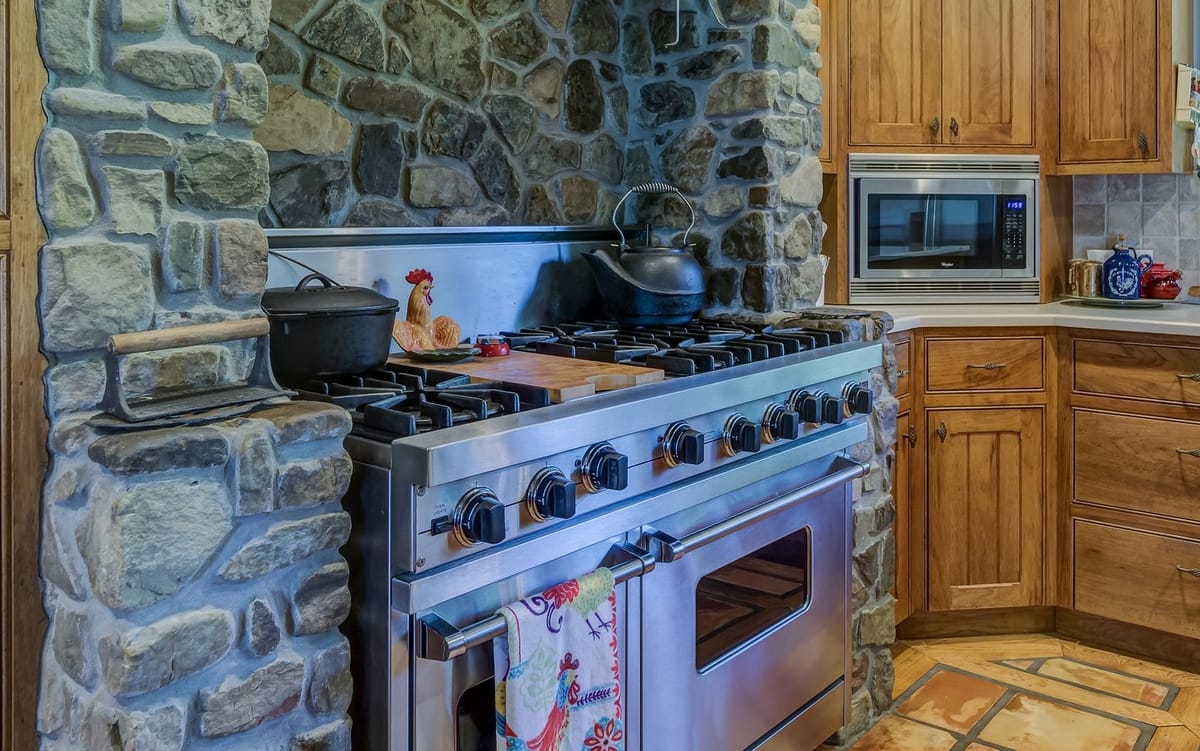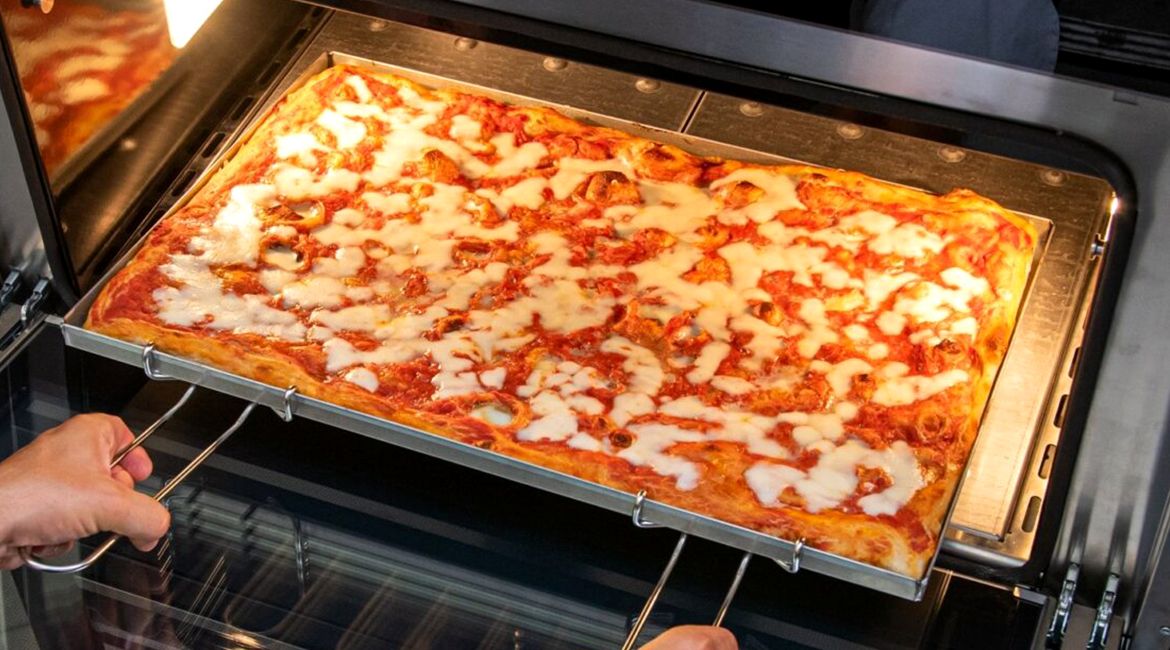The best pizza for the home oven

When making pizza at home, people often default to the round version, which is definitely the most common one we see around the world. The problem I have is that it's probably the style that is the least suited to a home kitchen. It requires specialised equipment like a pizza peel to place it in the oven, a pizza stone or steel to bake the bottom well, and a dedicated pizza oven, as often home ovens don't reach the required heat to bake properly. On top of all that, you have to cook each pizza individually meaning not everyone gets to eat at the same time and shaping the pizza from a ball of dough to a round disk takes quite a lot of practice before being consistently good at it. Trust me, I'm speaking from experience. For all these reasons, I think until you are confident enough in your abilities, the best pizza for the home cook is pizza in teglia.
Meaning quite literally pizza in a baking tray, this style of pizza is popular all over Italy, the most famous styles being found in Rome and Sicily, and across the USA, most notably in Detroit. The only piece of equipment you may need to purchase is a baking sheet, preferably one that will brown the bottom of your pizza to a nice golden colour. Chances are the one you already have will do the job correctly, but this will require some testing. I would recommend a blue steel baking sheet for the best results.

Pizza made this way is also perfectly suited for the home oven because often the highest temperature you'll need to reach to cook it is around 250°C, which most ovens can get up to. The reason behind this is that pizzas baked at lower temperatures take longer to cook through, which is why Neapolitan pizza is so difficult to recreate in a conventional oven as it requires a short baking time to obtain that trademark fluffy texture in the crust. Pizza in teglia on the other hand can afford to spend longer in the oven because they are generally thicker than round ones, so you will still get a crispy crust while not overcooking the interior, therefore not ending up with a biscuit instead of a pizza.
As for the technique, the only part of this process that requires a bit of knowledge is correctly fitting the pizza into the baking sheet.
Pizza in teglia is also an extremely versatile way of making pizzas as it tends to hold up very well to all kinds of different toppings due to it being slightly thicker than a traditional round pizza. Three of my favourite ways of eating it are:
- As a pizza Margherita, a classic across all styles of pizza. It consists of crushed canned tomatoes seasoned with some salt, topped with mozzarella di bufala and fresh basil leaves.
- As a pizza bianca con patate, my favourite version being Gabriele Bonci's from his book Pizza Hero, where the pizza is covered with thinly sliced potatoes, rosemary, oregano, marjoram and pecorino romano cheese.
- Simply as a foccacia Genovese, the eponymous bread from the Liguria region in the North of Italy, that simply consists of your dough drizzled with olive oil and sea salt.
Here is a simple dough recipe that will be well suited for the previously mentioned variations on the pizza in teglia:
Ingredients
- 415g of "00" Flour (with 12g of protein per 100g of flour)
- 290g of Water (70% of the flour quantity)
- 12.5g of Salt (1.7% of the flour quantity)
- 0.8g Instant Dry Yeast (0.2% of the flour quantity)
These quantities work for a 40cm x 30cm baking tray. To calculate the total amount of dough to use for yours, use this formula:
Total weight in grams = width in cm * length in cm * 0.6
Steps
- Mix the flour and the yeast in a large bowl and start adding the water gradually, mixing with a wooden spoon.
- When half of the water is incorporated, add the salt.
- Mix the remaining water into the mixture and once incorporated, turn out onto a lightly floured work surface.
- Knead for 4-5 minutes then place in an oiled covered bowl.
- Let rise for 5 hours or until tripled in size. Halfway through the rising time, do a dozen slap and folds (click here for a video explanation) and place the dough back in the bowl.
- Once risen, turn it out into your baking tray that has been brushed all over in olive oil.
- Start working it towards the edge of the tray with your fingers, trying not to tear through the dough and always pressing downwards. If the dough starts to feel too elastic and keeps retracting back, leave it for 15 minutes and return to it. Repeat until the dough covers all the tray.
- Top with tomato sauce or olive oil depending on your recipe and place in a 250°C oven that has been preheating for at least 30 minutes.
- Cook for 20-30 minutes or until the top is cooked and the bottom is a nice golden brown.
- Add the remaining ingredients and enjoy!
